Kenwood Mary Berry Special Edition Hand Mixer HM535CR Review - Mixing Review
Mixing Review
How straightforward is it to mix with the Kenwood Mary Berry Special Edition Hand Mixer HM535CR? First, I whisked six medium, room-temperature egg whites at setting 4. The egg whites became very foamy in 20secs, and soft peaks formed after 1min. I gradually added some sugar, achieving stiff peaks after a total of 2mins30secs mixing […]
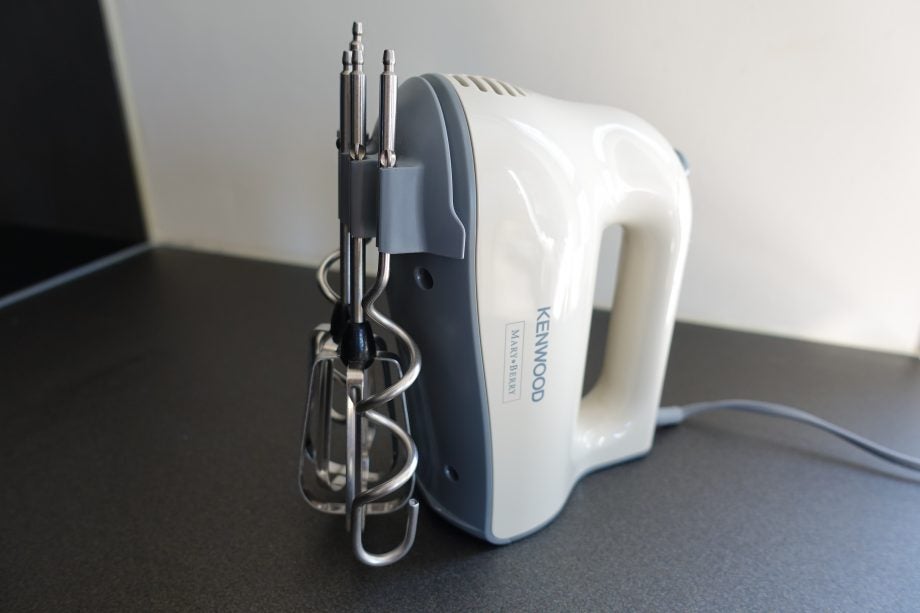
Sections
- Page 1 Kenwood Mary Berry Special Edition Hand Mixer HM535CR Review
- Page 2 Mixing Review
How straightforward is it to mix with the Kenwood Mary Berry Special Edition Hand Mixer HM535CR?
First, I whisked six medium, room-temperature egg whites at setting 4. The egg whites became very foamy in 20secs, and soft peaks formed after 1min. I gradually added some sugar, achieving stiff peaks after a total of 2mins30secs mixing time. That’s pretty fast.
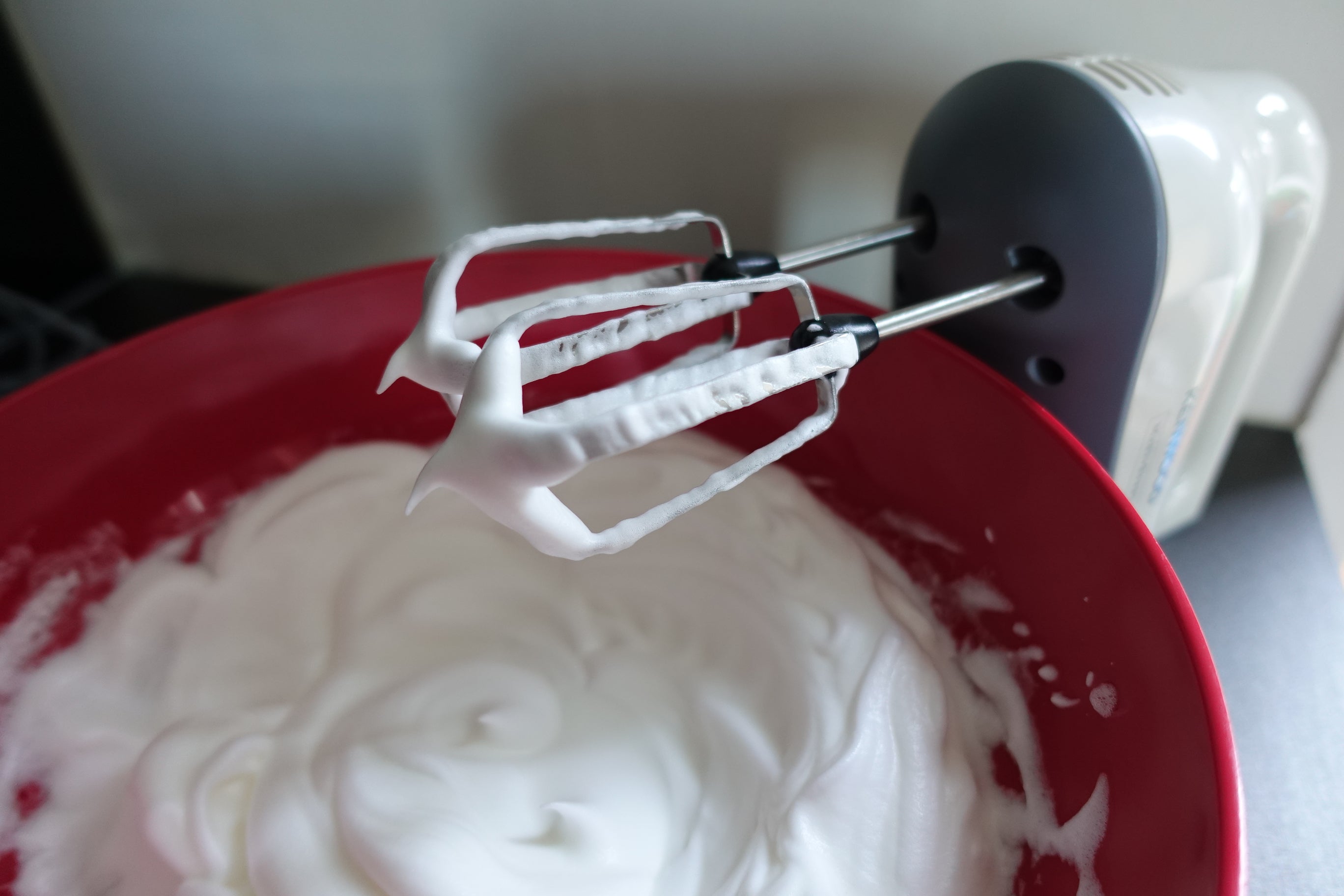
I then turned my attention to the rye and honey tea bread recipe in the manual. It recommended mixing all the ingredients using the beaters and the pulse function.
In the initial 30secs, flour flew everywhere as I struggled to control the mixer while applying enough pressure to hold the speed control switch up on P. The dough did come together, though.
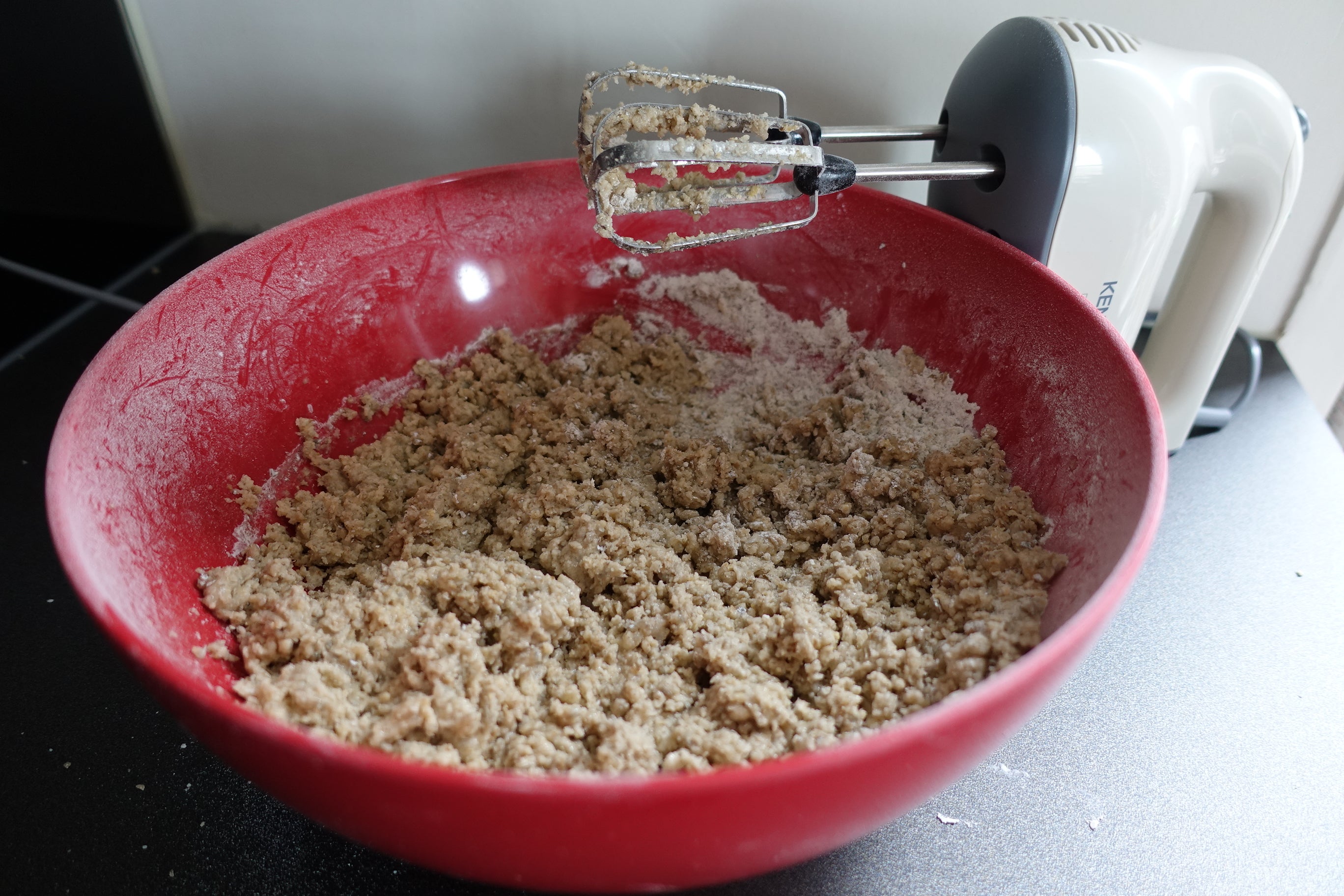
The recipe then recommended leaving the dough for 20mins and returning to it for 70secs of further pulsing. This resulted in bits of dough flung all over the place. I also had to pause every once in a while to stop the sticky dough from enveloping the beaters completely and attaching itself to the main body of the mixer.
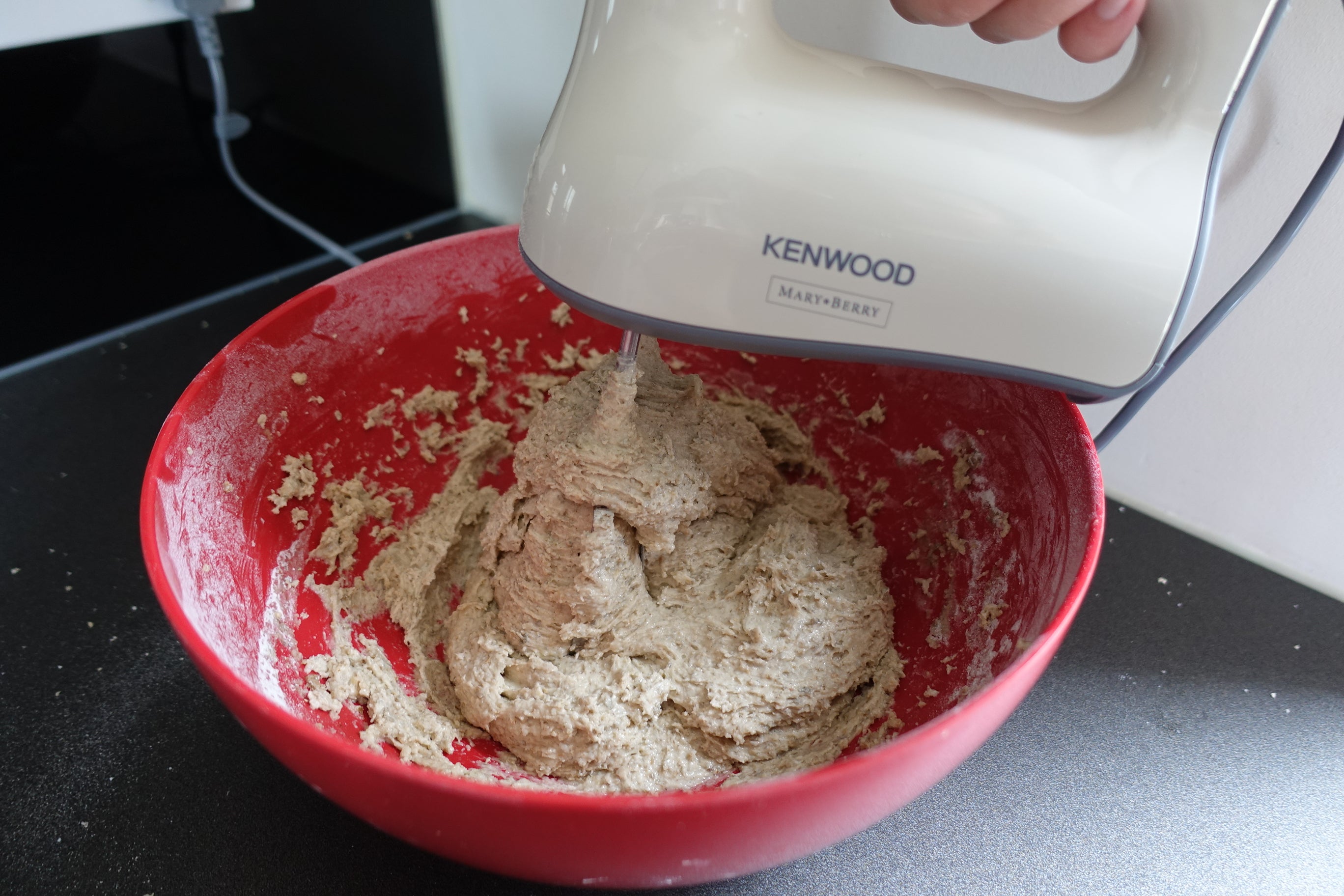
The tea bread had a nice rise, but a very close texture (likely due to the rye flour and honey rather than anything to do with mixing). As the dough was very stiff, it made sense to use a hand mixer here. However, a slightly slower setting may have been more useful than the pulse function. In general, I would reserve the latter as a boost for later stages of mixing.
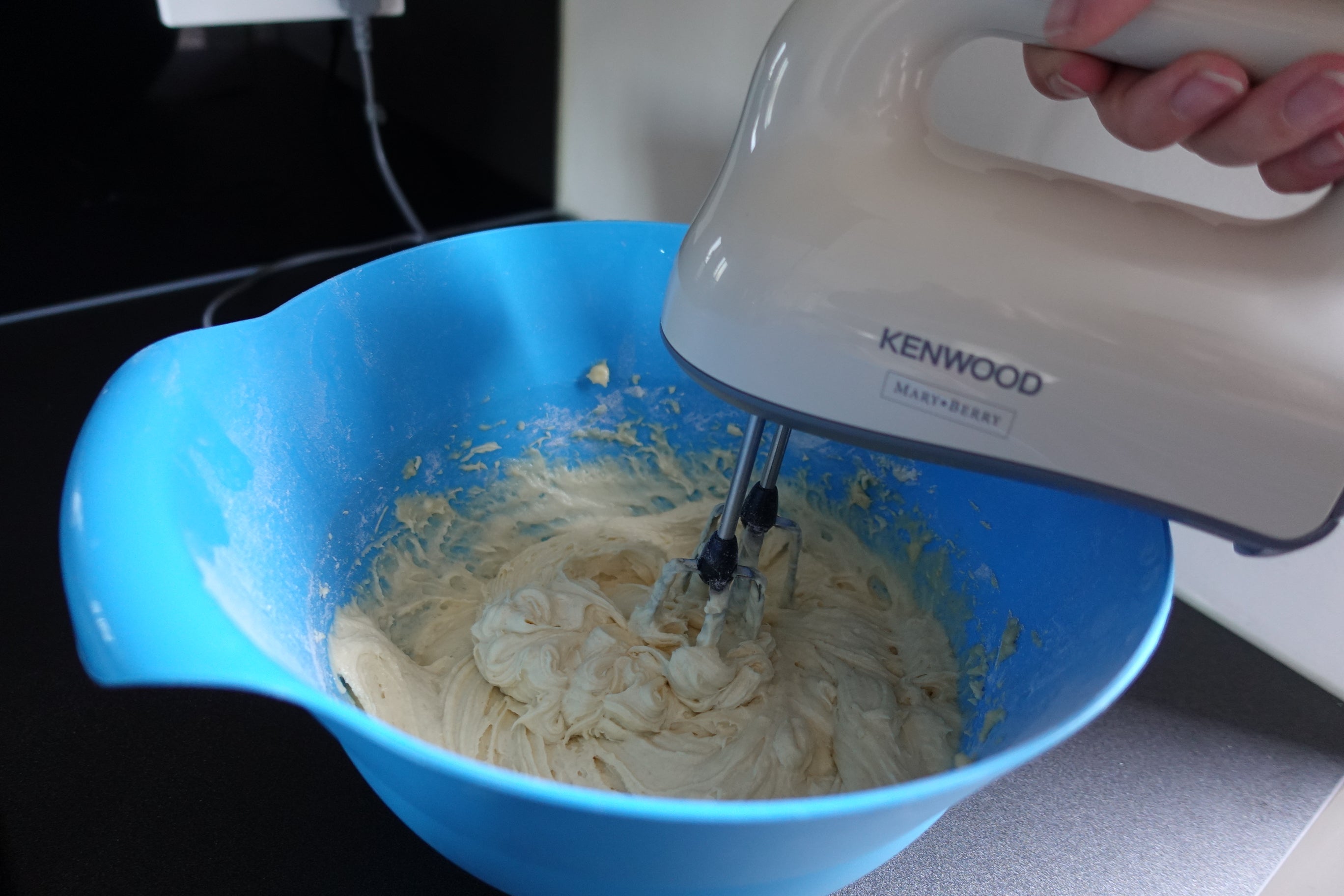
To test the HM535CR with a lighter all-in cake batter, I chose a cardamom and white chocolate sponge recipe by Mary Berry. It took only 1min30secs to combine all the ingredients, including softened butter, gradually increasing the speed from 1 to 3. (When I say ‘gradually’, I mean after I’d accidentally chosen speed 4 and set off a puff of flour.)
For the butter and cream cheese icing, I beat the ingredients with icing sugar for 1min30secs, resulting in a smooth, fluffy mixture.
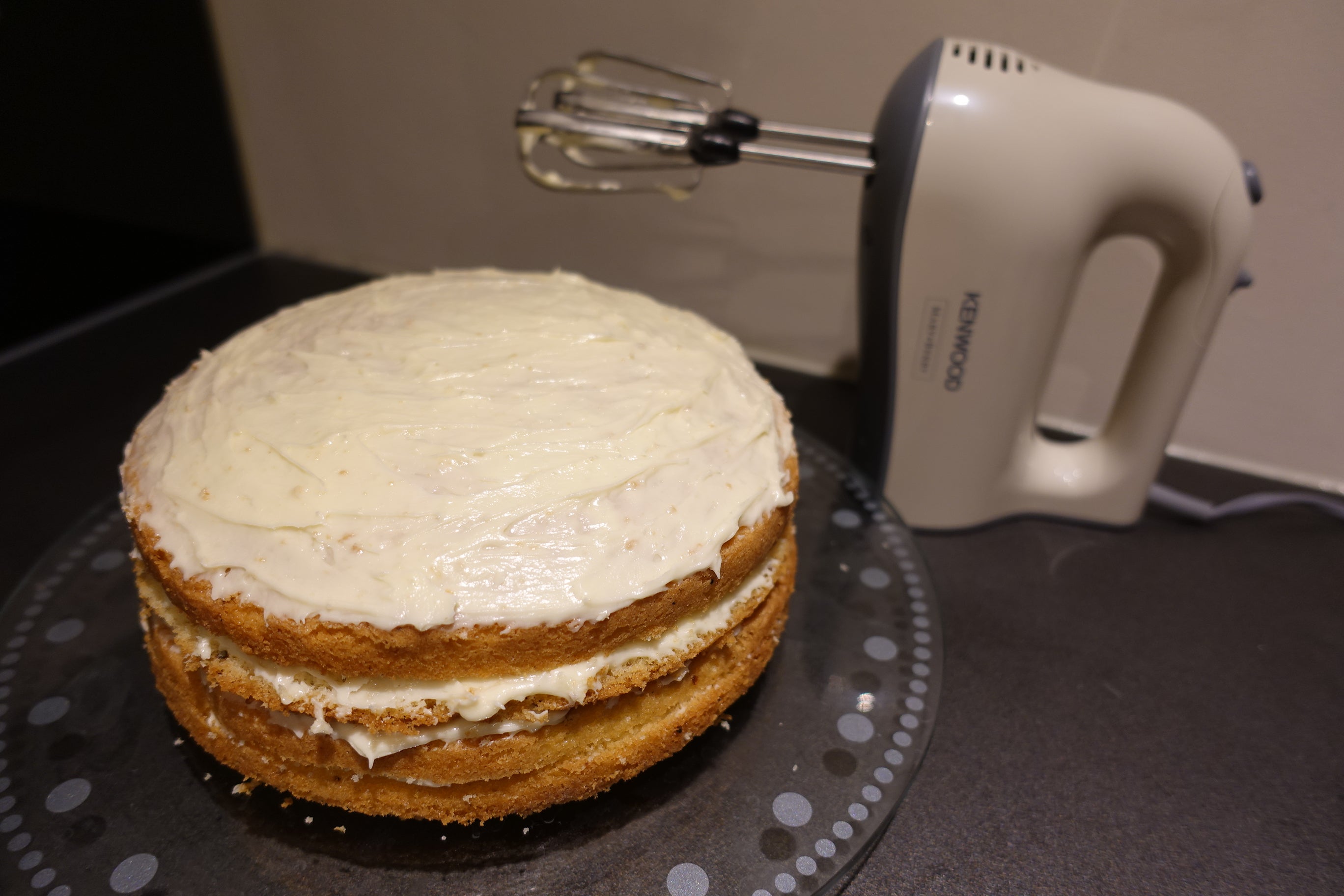
Finally, I turned my attention to the dough hooks, deciding to make a brioche according to a recipe by Berry’s old colleague Paul Hollywood. I combined brioche dough ingredients at speeds 1-2 for 2mins45secs. Once the mixture had mostly come together, I increased the speed to 3 for 45secs.
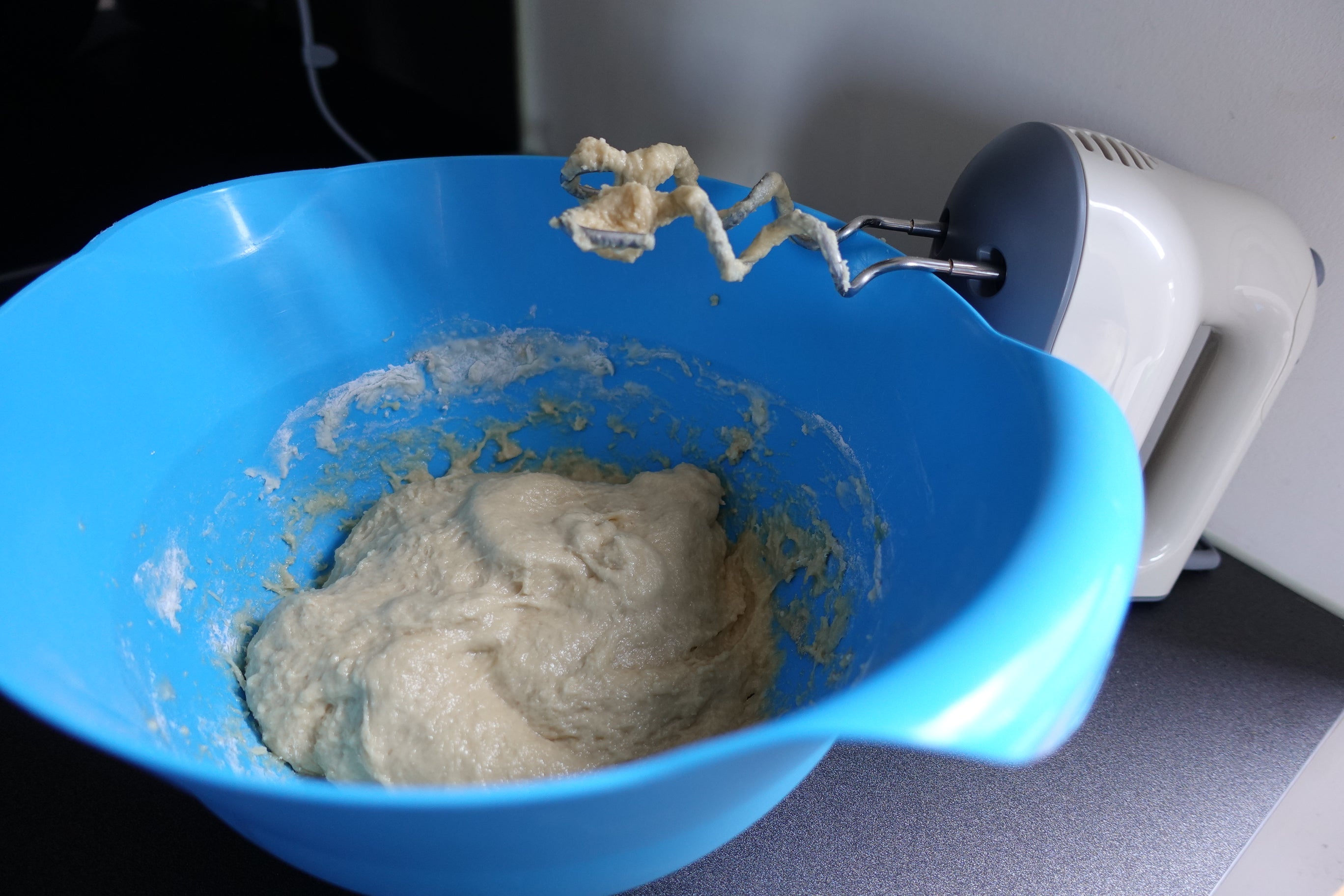
While this part of the process took less time than when I used the Russell Hobbs 24672 Desire hand mixer, it also had a practical reason. The 24672 Desire hand mixer has a continuous running time limit of 5mins, while the HM535CR’s maximum operation time is stated as 6mins for beating and 3mins for kneading.
Still, I was happy to take a suggested 15-min break as my arm was getting tired from holding the mixer. After the break, I mixed in a block of chopped, softened butter for 2mins30secs at speeds 2 and 3. The dough had a nice rise and the brioche came out fluffy.


